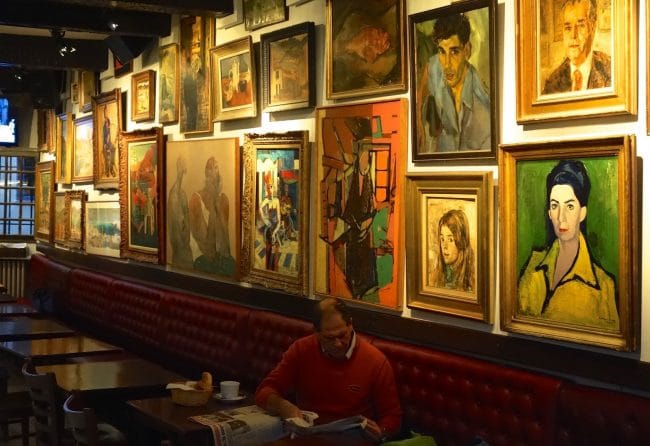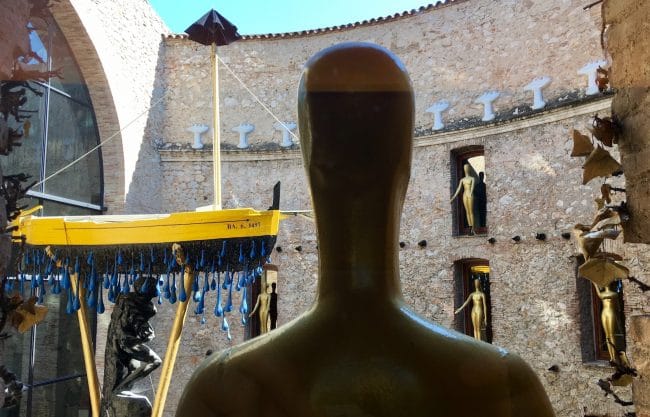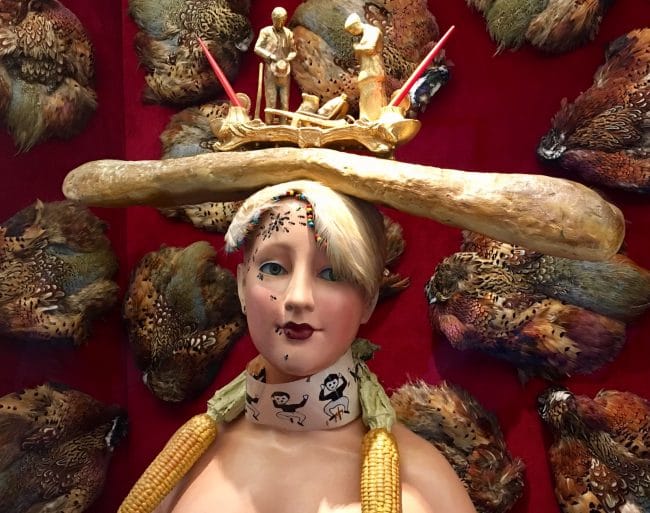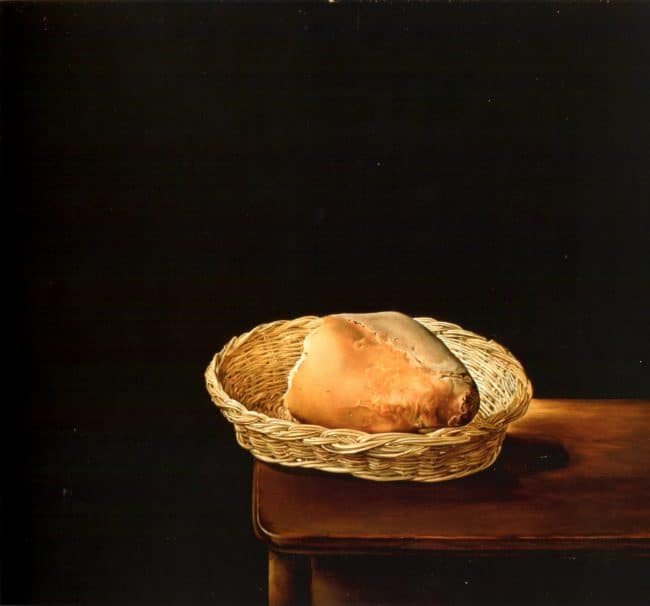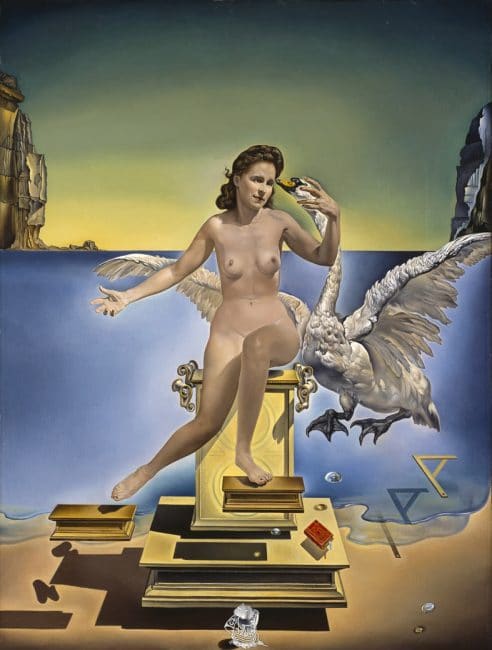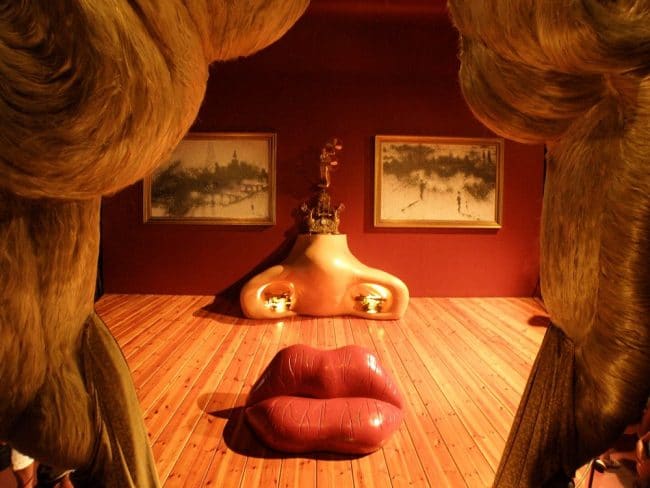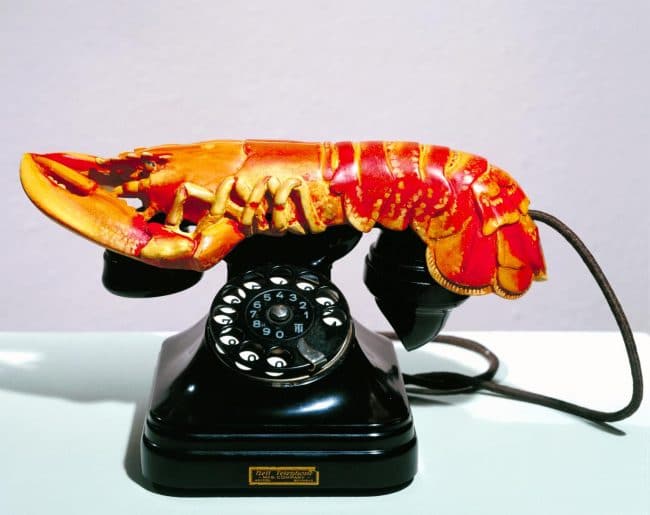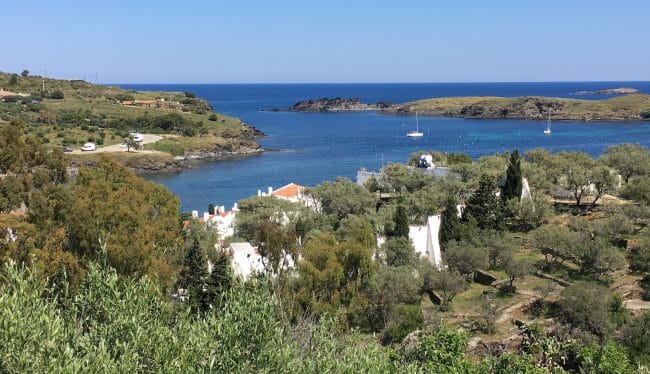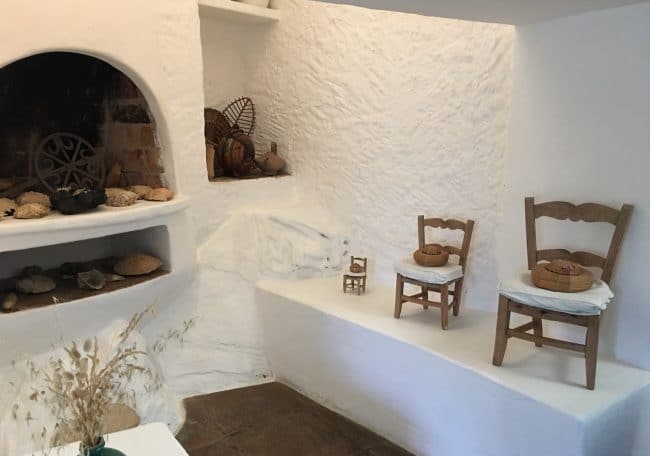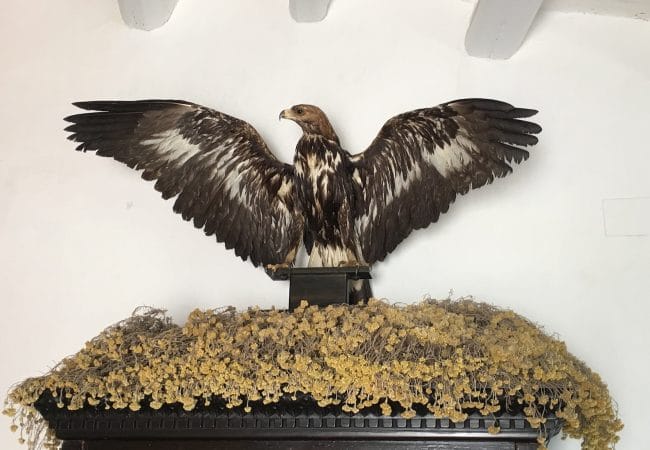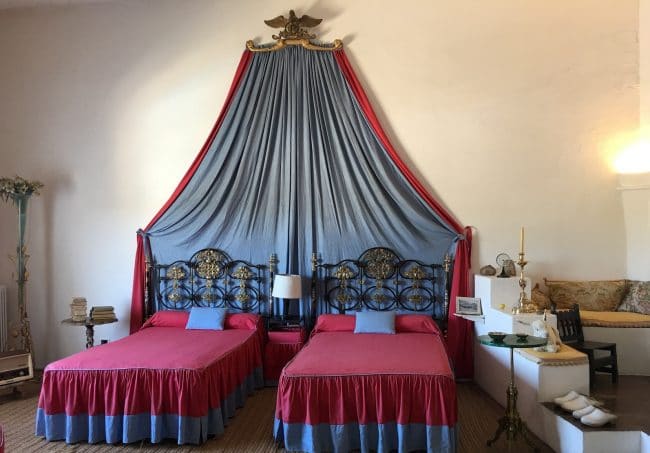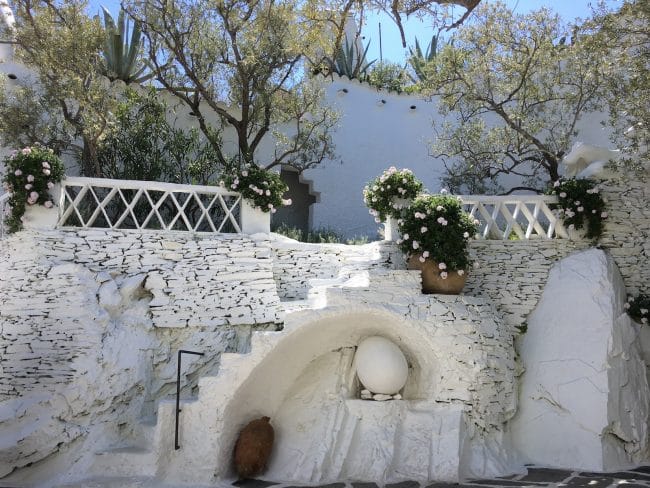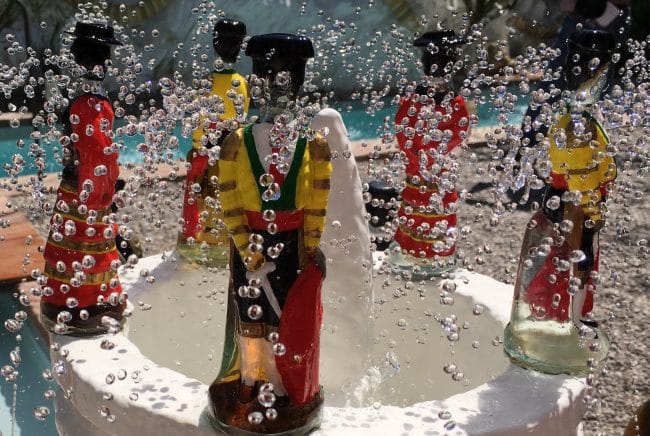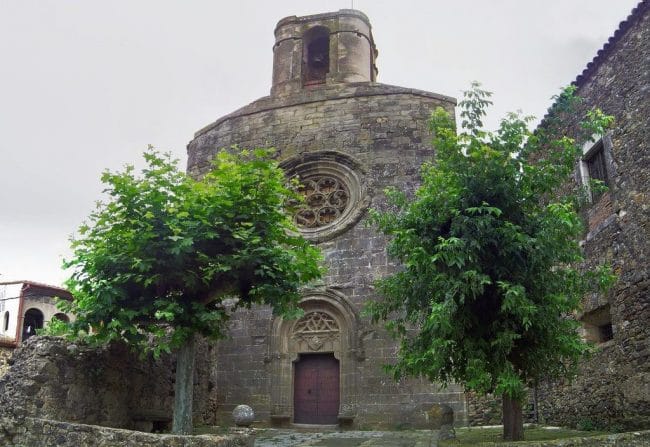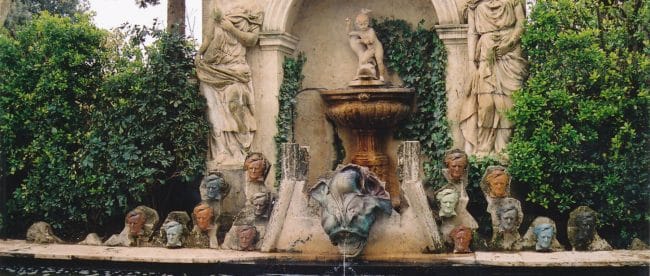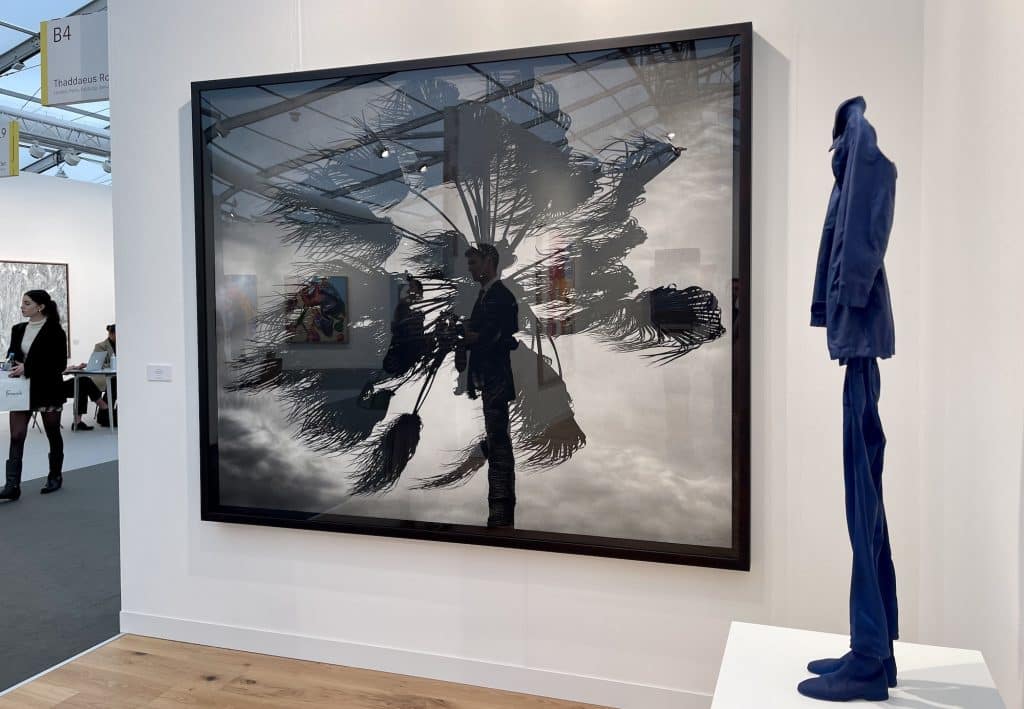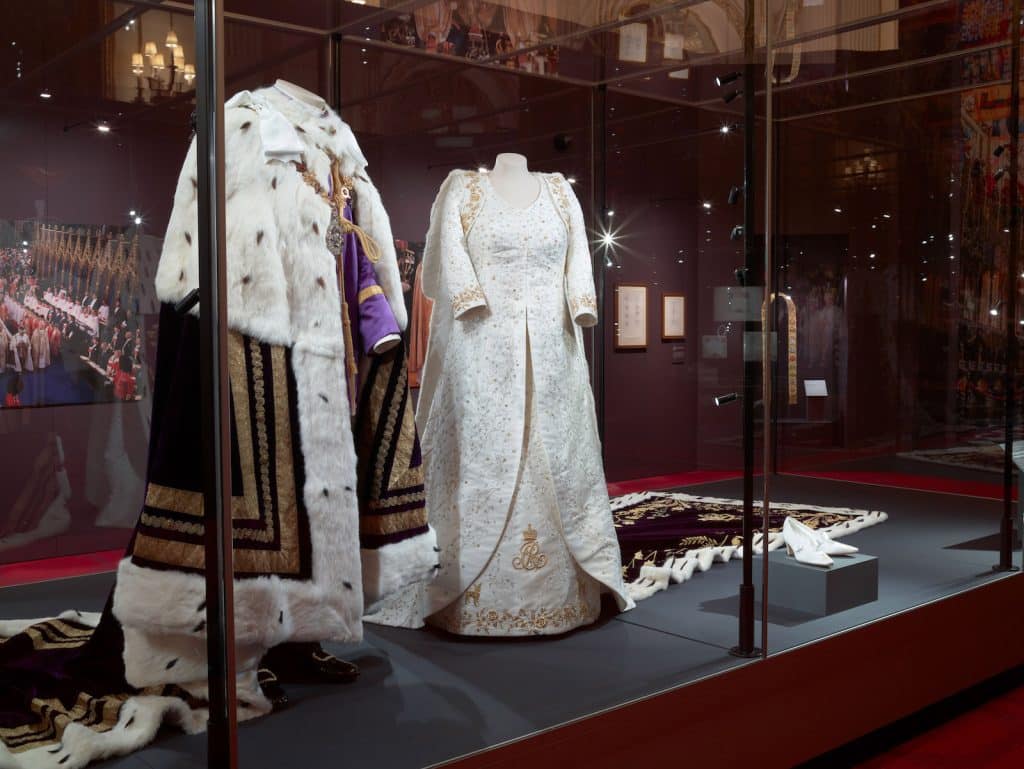The coastal region around the Spanish French border is a particularly beautiful and scenic area, and as with Provence the combination of scenery, quality of light and Mediterranean colour made the area a magnet for artists, particularly during the first half of the 20th century.
Just on the French side of the border lies Collioure. The Stella advert where an artist exchanges a painting for a cold beer was inspired by Les Templiers which sits on the harbour. From here the ‘path of fauvism’ which leads you around twenty sites where Henri Matisse and André Derain painted – at each is a reproduction of their painting.
Matisse and Derain were not the only painters to spend time here: Picasso, Dufy, Soutine, Gauguin, Miró and many others stayed and Collioure remains an artists town with around thirty different artists currently resident.
Just a few miles away, on the Catalan-Spanish side of the border, is the stomping ground of Salvador Domingo Felipe Jacinto Dalí i Domènech, Marquis of Dalí de Púbol – perhaps we will just call him Salvador Dali. He was born in Figueres in 1904 and lived in the region all of his life, much of it in nearby Port Lligat.
There are two main Dali visitor attractions here – the Teatre-Museu (Theatre Museum) in Figueres and the Casa-Museu (Home Museum) in Port Lligat.
We approached the area from Barcelona, less than two hours easy drive south, and started our visit at the at the Theatre-Museum. Located near to Dali’s birthplace and adjacent to the church where he was baptised this former municipal theatre was one that Dali used to visit as a child. Destroyed at the end of the civil war it long lay derelict. Later in life Dali, searching for a permanent museum for his work thought it ideal – not just because of historical connections but because his work is more than a little theatrical in nature.
It opened in 1964 and has expanded around the site in subsequent years. It now comprises two main sections: the theatre museum of 18 linked rooms, as conceived by Dali as an ‘unique art object’ alongside a series of newer galleries.
Do not expect the typical gallery ‘white cube’ experience. This museum, despite its 22 separate areas seems small and is cluttered and claustrophobic. It is also extremely busy (and we came early morning on a weekday, off season) – it is packed to the gills with tourists, guided tours and noisy school groups.
The central point is a courtyard across which a boat sails – using an umbrella – whilst beneath it a mannequin-driven vintage car – inspired by ‘Rainy Taxi‘ from the groundbreaking 1938 surrealist exhibition in Paris – acts as a plinth for a surrealistic statue. The visual excess continues without respite through the galleries, small and large. We are sometimes allowed a short time to view some paintings but on the whole this is an ‘installation’ where more is more and every nook and cranny is filled with a ‘surrealistic’ object.
There is very occasional relief with one of Dali’s better paintings such as Basket of Bread (1945) and Leda Atomica (1949), but his best work is now in other galleries. The Face of Mae West is recreated in a room where a single viewing point allows the illusion of the face to appear. There is also a version of the Lobster Telephone (1936).
Dali wanted this to be ‘a great surrealist object… a totally theatrical museum. The people who come to see it will leave with the sensation of having had a theatrical dream.’ If it sounds all too much, then it probably is. Come here for a big dollop of the theatricality of Dali and enjoy the impressive egg-adorned building.
Relieved to leave the hustle and bustle we drove onwards to the Casa-Museu at Port Lligat. This is a visit that must be pre-booked in a timed slot as the museum is small and only accessible to guided groups. Park at the top of the adjacent town, Cadaques, before strolling down through the cobbled alleys with their whitewashed buildings to a pretty and peaceful harbour. Its then just a pleasant ten minute walk from here to the small cluster of buildings that is Port Lligat in the adjacent bay.
This is a delightful and sleepy one horse town. That ‘horse’ is of course the Dali Casa-Museu, housed in a group of adjoining cottages that overlook the harbour. Dali originally bought just one cottage but gradually added others and the buildings are joined in a maze of rooms and staircases.
There are no gallery spaces here, this is simply Salvador & Gala Dali’s home, preserved faithfully as he left it.
In contrast to the noisy, crowded and overly theatrical Teatre-Museu the Casa is wonderful. It is not only an atmospheric home but a visual delight with clever and creative decorative touches that attest far more to the imagination and creative genius of Dali than the Museum at Figueres. Take plenty of time to stroll around the terraced garden and pool area too.
The last of the Dali properties, and least interesting artistically, is the Castle of Púbol near Girona. This is a medieval building where Dalí‘s creative efforts were focused on providing his wife Gala with a unique sanctuary and resting place. Strangely Dali agreed not to visit her there without getting advance permission from her in writing!
This is a look at how Gala Dali lived and died, including on the second floor a permanent showroom of Gala’s haute couture wardrobe and in the basement a crypt where she is buried.
With precision timing all three can be visited in a day but we suggest prioritising the Casa Museu with a timed ticket, then the Theatre Museum with finally perhaps, depending upon time, just a stroll around the pretty Pubol village instead of a museum visit.
For more information visit www.salvador-dali.org
Cellophaneland were guests of the Salvador Dali Foundation





